JJay
International Hazard
    
Posts: 3440
Registered: 15-10-2015
Member Is Offline
|
|
Easiest Way to Make Calcium Acetate
What is the easiest way to make calcium acetate? Earlier I attempted to mix hot saturated solutions of calcium chloride and sodium acetate, but this
resulted in precipitation of calcium acetate as a hydrate, along with sodium chloride and perhaps mixed salts, forming a nearly solid mass.
Seeing how my only source of concentrated acetic acid is from dripping drain cleaner on oven-dried sodium acetate, and I don't feel like reacting
vinegar with calcium carbonate and boiling off a lot of water, is there an easier way of making calcium acetate?
|
|
|
ninhydric1
Hazard to Others
  
Posts: 345
Registered: 21-4-2017
Location: Western US
Member Is Offline
Mood: Bleached
|
|
You could add 50-70% sulfuric acid to sodium acetate, and extract crude acetic acid from it using DCM, diethyl ether, or another inert solvent
immiscible with water. Evaporate off the solvent (this is why DCM is ideal) and add calcium carbonate. Now you have some crude calcium acetate which
be recrystallized if needed. No excess boiling off of water required.
The philosophy of one century is the common sense of the next.
|
|
|
RogueRose
International Hazard
    
Posts: 1585
Registered: 16-6-2014
Member Is Offline
|
|
I don't think there is any other short way with easily available chemicals. IDK if adding Ca(OH)2 and vinegar or an acetic acid solution would be
quicker than CaCO3, I think it might be and I can try and let you know. Still have to boil it down though.
|
|
|
Boffis
International Hazard
    
Posts: 1836
Registered: 1-5-2011
Member Is Offline
Mood: No Mood
|
|
What's wrong with colourless, distilled vinegar and either slaked lime or garden lime (usually ground limestone). Add an excess of the lime, leave to
stand for a week or two, heat to boiling and cool to make it easier to filter, filter and then evaporate down. Stop evaporating when the liquid starts
to form a crystalline skin, cool and then allow to evaporate slowly in a shallow bowl. Long colourless prisms form slowly as the liquid evaporates.
Alternatively evaporate on a water bath in a strong draft with constant stirring to obtain it as breadcrumb-like granules. I used to evaporate the
solution in shallow glass pyrex tray-like piece of cookware on top of our central heating boiler. In winter this runs at about 40-45 C for months on
end and eventually evaporation reached the point where colourless prisms an inch or more in length form. Calcium acetate monohydrate like the
comparable strontium, barium, nickel etc acetates seems to have an almost flat temperature v solubility relationship so you can't crystallise it by
cooling a saturated solution and you can't precipitate it with alcohol because it forms a terrible gel.
|
|
|
JJay
International Hazard
    
Posts: 3440
Registered: 15-10-2015
Member Is Offline
|
|
Quote: Originally posted by Boffis  | | What's wrong with colourless, distilled vinegar and either slaked lime or garden lime (usually ground limestone). Add an excess of the lime, leave to
stand for a week or two, heat to boiling and cool to make it easier to filter, filter and then evaporate down. Stop evaporating when the liquid starts
to form a crystalline skin, cool and then allow to evaporate slowly in a shallow bowl. Long colourless prisms form slowly as the liquid evaporates.
Alternatively evaporate on a water bath in a strong draft with constant stirring to obtain it as breadcrumb-like granules. I used to evaporate the
solution in shallow glass pyrex tray-like piece of cookware on top of our central heating boiler. In winter this runs at about 40-45 C for months on
end and eventually evaporation reached the point where colourless prisms an inch or more in length form. Calcium acetate monohydrate like the
comparable strontium, barium, nickel etc acetates seems to have an almost flat temperature v solubility relationship so you can't crystallise it by
cooling a saturated solution and you can't precipitate it with alcohol because it forms a terrible gel. |
That's not a bad method (I think typically it reacts pretty quickly) except that it requires boiling off a lot of water. I try to avoid boiling things
to dryness whenever possible, but it's often unavoidable.
|
|
|
Boffis
International Hazard
    
Posts: 1836
Registered: 1-5-2011
Member Is Offline
Mood: No Mood
|
|
If you use clear vinegar called "pickling vinegar" as against table vinegar for use as a condiment. Check the strength I have found it up to 30% in
some countries. This is a little too strong to obtain a virtually saturated solution (recipe 22g CaCO3 in 100ml of 20% acetic acid; when the smell of
vinegar has gone filter off the excess carbonate and you should have a nearly saturated solution (about 30g per 100ml of solution).
I would recommend that you don't evaporate to dryness. Stop when you have a crystalline slurry and filter off the calcium acetate monohydrate and then
carry on evaporation. With a boiling water bath and a hair drier you can evaporate to dryness but it requires a lot of manual stirring. Don't try
using a free flame because you can't stir fast enough and it always bumps and splattered the stuff everywhere.
|
|
|
aga
Forum Drunkard
    
Posts: 7030
Registered: 25-3-2014
Member Is Offline
|
|
All depends on how much time you got.
If time is not a factor, chuck some eggshells,snail shells, seashells or limestone rock into vinegar and wait.
Could take months, but would work.
If you can wait a year or so, squash up some grapes in a bucket with a chunk of limestone in it.
Eventually natural yeast will ferment the sugars to alcohol, then whatever organism converts that to vinegar will find it.
Alternately, a convenient lab method is here:
http://www.sciencemadness.org/smwiki/index.php/Calcium_aceta...
|
|
|
AJKOER
Radically Dubious
    
Posts: 3026
Registered: 7-5-2011
Member Is Offline
Mood: No Mood
|
|
Quote: Originally posted by JJay  | What is the easiest way to make calcium acetate? Earlier I attempted to mix hot saturated solutions of calcium chloride and sodium acetate, but this
resulted in precipitation of calcium acetate as a hydrate, along with sodium chloride and perhaps mixed salts, forming a nearly solid mass.
.....
|
Avoid an excess of CaCl2 due to the reported formation of a mixed salt hydrate between calcium acetate and the calcium chloride. To quote the
observations by Watts:
"A solution of acetate and chloride of calcium in equivalent proportions yields by slow evaporation, large crystals.."
Link: https://books.google.com/books?pg=PA13&lpg=PA13&dq=c...
--------------------------------------------
Also, more double salts apparently occur and even an acid salt from concentrated acetic acid acting on Ca(OH)2. To quote from a possibly dated source:
"With acetic acid and calcium nitrate a crystallised double compound is formed, and an acid salt, Ca(C2H3O2)2.C2H3O2, is obtained by treating solid
calcium hydroxide with concentrated acetic acid."
Link: http://calcium.atomistry.com/calcium_acetate.html
[Edited on 16-4-2018 by AJKOER]
|
|
|
RogueRose
International Hazard
    
Posts: 1585
Registered: 16-6-2014
Member Is Offline
|
|
I was trying to figure out the molar amounts of a gallon of 5% vinegar. IDK if this is the proper calculation.
3785ml * .05 = 189.25ml (this would be amount of 100% acetic acid in volume)
density is 1.05g/ml
189.25ml * 1.05g/ml = 198.7g of acetic acid
molar mass = ~60g/mol
198.7g/60g = 3.31 moles per gallon of 5% vinegar.
I was looking for a rough estimate give or take a few percent because IDK if they use weight or volume for the 5%, but since it has a density so close
to water, it doesn't matter much.
I'm trying to make some calcium acetate with calcium hydroxide (that seems to have absorbed a good bit of CO2...)
|
|
|
JJay
International Hazard
    
Posts: 3440
Registered: 15-10-2015
Member Is Offline
|
|
I think % composition is usually by weight unless stated otherwise. You can stir the vinegar (preferably with a motorized stirrer) over low to
moderate heat while adding a small excess of calcium hydroxide and then filtering. With calcium carbonate, slow addition helps to prevent excessive
foaming. I'm not sure what the properties of basic calcium acetates are.
|
|
|
VSEPR_VOID
National Hazard
   
Posts: 719
Registered: 1-9-2017
Member Is Offline
Mood: Fullerenes
|
|
https://www.ebay.com/itm/Calcium-Acetate-Ultra-Pure-99-min-5...
Buying it is very easy. 23 USD for 500g.
You could also react Ca(OH)2 with vinigar but how economic this is depends on how much you can get vinegar for.
https://www.ebay.com/itm/Calcium-Hydroxide-Ca-OH-2-Minimum-9...
You would need about 18 moles of acetic acid in total to completely convert the whole lot of calcium hydroxide to the acetate.
Within cells interlinked
Within cells interlinked
Within cells interlinked
|
|
|
clearly_not_atara
International Hazard
    
Posts: 2692
Registered: 3-11-2013
Member Is Offline
Mood: Big
|
|
CaCl2, Ca(OAc)2, and NaOAc dissolve in ethanol. NaCl does not. That makes for an easy synthesis if you can manage to keep it all relatively dry.
[Edited on 04-20-1969 by clearly_not_atara]
|
|
|
RogueRose
International Hazard
    
Posts: 1585
Registered: 16-6-2014
Member Is Offline
|
|
So by my calculations it takes about 2 gallons of 5% vinegar to make just over 500g of calcium acetate.
When dissolving my Ca(OH)2 I found that a good bit of CO2 evolved so that meant I had some carbonate in there thus my molar weight for Ca(OH)2 was
low. So I added what would be needed had I used CaCO3, which was only 100g extra and whatever doesn't dissolve will filter out.
I mixed everything up then heated on stove until boiling, allowed to settle and poured the undissolved Calcium compound into my buchner funnel. Then
I ran all the liquid through the funnel (while hot) allowing it to come into contact with the calcium compound to ensure complete reaction. The
filtrate was totally clear and is a slight yellowish color. IDK if that is normal or not, sometimes this vinegar produces off-color acetates (sodium
acetate especially) and I filter with activated carbon and it usually removes the color. Don't know if calcium acetate solution should be a light
yellow color when it is close to saturation of ~30g/100ml.
Now I'm trying to figure out how do boil it down b/c it has a higher solubility at lower temp, so it should crystallize at 100C and then turn to
liquid as it cools, or so that is what the numbers seem to say. I don't have any experience with this compound so this will be a learning experience.
|
|
|
VSEPR_VOID
National Hazard
   
Posts: 719
Registered: 1-9-2017
Member Is Offline
Mood: Fullerenes
|
|
Quote: Originally posted by RogueRose  |
So by my calculations it takes about 2 gallons of 5% vinegar to make just over 500g of calcium acetate.
When dissolving my Ca(OH)2 I found that a good bit of CO2 evolved so that meant I had some carbonate in there thus my molar weight for Ca(OH)2 was
low. So I added what would be needed had I used CaCO3, which was only 100g extra and whatever doesn't dissolve will filter out.
I mixed everything up then heated on stove until boiling, allowed to settle and poured the undissolved Calcium compound into my buchner funnel. Then
I ran all the liquid through the funnel (while hot) allowing it to come into contact with the calcium compound to ensure complete reaction. The
filtrate was totally clear and is a slight yellowish color. IDK if that is normal or not, sometimes this vinegar produces off-color acetates (sodium
acetate especially) and I filter with activated carbon and it usually removes the color. Don't know if calcium acetate solution should be a light
yellow color when it is close to saturation of ~30g/100ml.
Now I'm trying to figure out how do boil it down b/c it has a higher solubility at lower temp, so it should crystallize at 100C and then turn to
liquid as it cools, or so that is what the numbers seem to say. I don't have any experience with this compound so this will be a learning experience.
|
Make sure to add it to the List of Chemicals and Materials Made by Sciencemadness.org Users
https://docs.google.com/document/d/1AoI2VA5L4bmFw2HwXS2OVYTV...
Within cells interlinked
Within cells interlinked
Within cells interlinked
|
|
|
RogueRose
International Hazard
    
Posts: 1585
Registered: 16-6-2014
Member Is Offline
|
|
So I'm wondering if it is supposed to look like creamy oatmeal/cream of wheat when it starts to thicken at high temp. This is definately not like any
other compound I have ever seen.
What would be the best way to remove the water? Heating on a hot plate seems to need constant stirring and it still gets stuck to the bottom of the
pan/beaker. Would putting it in an oven and heating at maybe 250 be the best way to boil the water off? It has a decomp point of ~320F.
|
|
|
symboom
International Hazard
    
Posts: 1143
Registered: 11-11-2010
Location: Wrongplanet
Member Is Offline
Mood: Doing science while it is still legal since 2010
|
|
Calcium acetate that's what's in California snow balls a mixture of ethanol and calcium acetate
Calcium chloride reacting with sodium acetate could give you the results you want but it should be prepared in absolute alcohol as the calcium acetate
is insouble in absolute alcohol
If vinegar is used isopropanol could be used to precipitate the calcium acetate
I like that idea of a list of chemicals made by members
[Edited on 17-4-2018 by symboom]
[Edited on 17-4-2018 by symboom]
|
|
|
VSEPR_VOID
National Hazard
   
Posts: 719
Registered: 1-9-2017
Member Is Offline
Mood: Fullerenes
|
|
Two gallons of vinegar and 10 dollars of calcium hydroxide is a good deal and the reaction/purification straight forward. Make sure to take photos and
keep us posted
Within cells interlinked
Within cells interlinked
Within cells interlinked
|
|
|
RogueRose
International Hazard
    
Posts: 1585
Registered: 16-6-2014
Member Is Offline
|
|
Calcium Acetete synth, yield & cost analysis & comparison for acetone production
So I finally finished my synthesis and am extremely happy with the results. I have about 470g of anhydrous (IDK if there is a hydrate) and I have yet
to finish washing the residue and carbon filter and suspect another ~30g or so. I used 2 gallons of 5% distilled white vinegar and Ca(OH)2 (which had
a decent amount of CaCO3 from CO2 absorption). So instead of using the molar amounts of hydroxide I used the amounts for CaCO3, which came out to
~340g instead of ~244g of hydroxide and there was remaining undissolved calcium compound but I ensured all the acetic acid reacted.
I have to say that filtering the hydroxide/carbonate sludge through my buchner filter (with vacuum) was extremely slow, probably slower than even
CaSO4, which surprised me.
I ended up with a slightly yellow liquid, though completely clear, just tinted. I evaporated this (oven at 275F) and ended up with pure white calcium
acetate on the bottom of the pan but the salts creep up the sides and that part, especially the top was very yellow brown, so it seemed the
contaminates slowly migrated up the salts and were last to evaporate. It was interesting to see the separation of what seemed to be pure and then the
impure around the upper edges.
I have pics for all of this and I will edit and post them when I get my phone to transfer the pics.
I decided to dissolve everything and use activated carbon (powdered) to see if it would clean everything up. After the first filtration I still had
some discolouration on the upper edges as before but probably only about 10-20% as bad. I filtered again. Liquefied to less than saturated point
(about 50% saturation seemed to work better for filtering, about 4x faster as less dense), used old carbon and added a little more. Shook very well
in gallon jug (about 3L of liquid) then used an inverted 2L bottle with square cotton swabs rolled to plug spout, then allowed liquid to drip through
(about 3-4 hours) and got crystal clear liquid.
For the evaporation this time I used a teflon coated pot as before I used a SS container and it was almost impossible to get the calcium acetate off
once completely dried, but with the teflon, it came off beautifully.
I then powdered in food processor. It is an extremely light and fluffy material much like MgCO3 in consistency and density/volume though doesn't seem
drying like the carbonate. It is extremely white and pure.
I was working with 3.31 moles of acetic acid which translates to ~520g of calcium acetate (158g/mole *3.3) so my current yield is 90% but with the
final filter washing & remnants from grinding & drying pan (returned for final filtration & drying) the expected 30g should make the yield
about 96%! Now there is also the remaining 100g of calcium hydroxide that wasn't washed (might do this as well to see if I can get close to 100%) and
still has acetate in it, so all in all the yield for this process was great!
Total price is also extremely good, normal price of gallon of vinegar is $2.59 (and was 35% off of that) for $3.37 for vinegar. Slacked lime (calcium
hydroxide) $6.25 / 50lbs - $0.13/lb (340g used = $.09 !) for a grand total of just under $3.50 for about 500g of calcium acetate that I believe is
extremely pure. I would like to determine how pure this is and IDK if there is a way to test this.
Now IDK what to do with this but have thought about making some pure acetone. The 500g should yield about 244ml or about 191g. IDK if this could be
considered reagent grade if made from this process but it seems like it might and this is done through heating to decomp at about 320F.
So I thought I would compare to some commonly available reagent grades of acetone and here are the price breakdowns I came up with from the companies
- bolded are the comparisons to the $3.50 it should cost for the 244ml of acetone (excluding electricity and time)
-Fishcersci ACS grade 99.5% = $38 / 100ml or $55 for 500ml (plus fair amount for shipping) $92/244ml (@ 100ml size) ; $27/244ml (@ 500ml
size)
-Spectrum Chem ACS/reagent = $43 / 100ml or $60 for 500ml (plus fair amount for shipping) $105/244ml (@ 100ml size) ; $29.50/244ml (@ 500ml
size)
-Amazon (generic) ACS (not food or drug use - educational only) $38 / 1L ($9.5 / 244ml)
-ScienceCompany - 16oz/473ml = $32 w/shipping ($16.8/244ml)
-Grainger -ACS Reagent 4L - $180 w/ shipping ( $11/244ml)
|
|
|
RogueRose
International Hazard
    
Posts: 1585
Registered: 16-6-2014
Member Is Offline
|
|
Pictures from the calcium acetate synth from vinegar and Ca(OH)2
Well I thought I'd be able to edit the above post and add pics but I guess there is a time cut off for editing, so here are the pics from the synth of
my calcium acetate.
The solution used only had excess Ca(OH)2 and CaCO3 filtered out, it was clear but slight yellow tint, a little darker than strong NaOCl. This was
boiled on the top of a stove, it was very difficult to drive off the water once it started to congeal and the material on the bottom started to stick
badly.
Pic 1
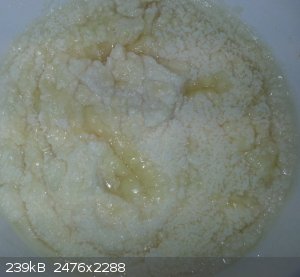
This is the above after baking in oven at 275 for some time
Pic 2
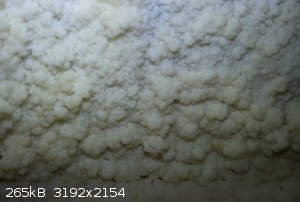
Re-dissolved and baked again, this seemed to be more pure but edges were discolored
Pic 3
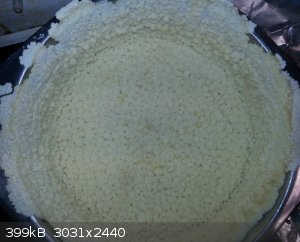
Closeup of above pic on bottom of pan, was still very soft and mushy
Pic 4
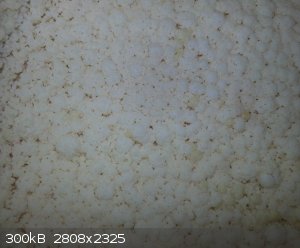
Before carbon filtering
Pic 5
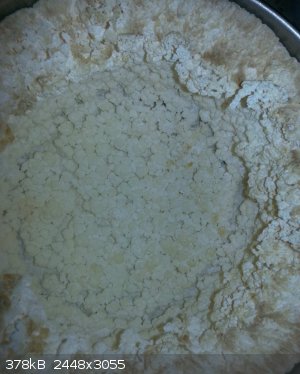
Before carbon filtering
Pic 6
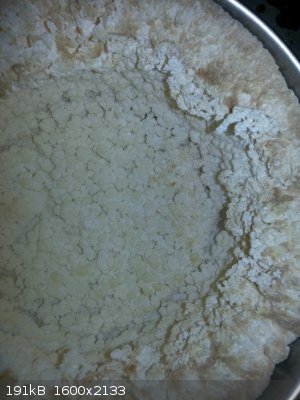
After final 2nd filtering through activated carbon
Pic 7
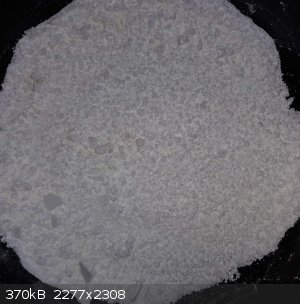
Calcium acetate is a very strange substance, especially when it is drying and when re-hydrating. When drying it forms something like pilars that form
small "clouds"/puffs on the top of them, and these dry first and everything underneath remains a gooey mess. Decomp of this acetate is stated at 320F
so I kept temps (in the oven) at 275 -295 and found this to not cause problems. When liquid it started to form round white globules in the liquid,
much like when fat or soap starts to solidify from a saturated solution.
What I found pretty interesting, especially after the first filtering with activated carbon, was that the bottom remained pretty pure and white and
the impurities that caused discolouration migrated to the top edges of the drying substance. As the water evaporated, the compound climbed the sides
of the pot even to the point of starting to climb down the outside of the pot, so use a much larger pot than you might think you need, I only ever
filled to about 30% full and it still reached the top.
After the first carbon washing, I had discolouration around the top ring (don't know were pics are) that looked similar to pic 6 but 90% was pure
white, the bottom and most sides, but the top ring had some yellow/brown. I filtered again and got absolutely no discolouration and the result is pic
7 after I removed the material stuck on the sides.
As I said before, this stuff seems to be extremely difficult to remove from stainless steel, ceramic and even glass once it is completely dry, even
using a wood chisel it didn't want to come off, a layer was left behind about 1-2mm thick that had to be dissolved. I used a non-stick put (Teflon or
similar) and it removed perfectly with no damage to pot.
An update on yield, I was working on washing the remaingng Ca(OH)2/CaCO3 and then the carbon and filters. I ended up boiling down the solution but
forgot about it and it burnt. I got about 25g of decomposed material which should be CaCO3
This is the decomposed material. I expected it to be pure white - or almost all white. IDK what the black is, I suspect it is from some sugar which
was present in the vinegar.
Pic 8
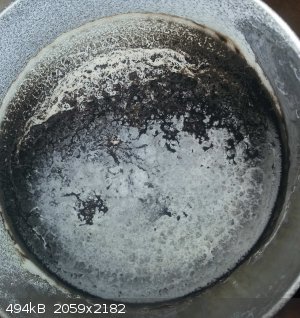
Just the material from above broken up so I can weigh it.
Pic 9
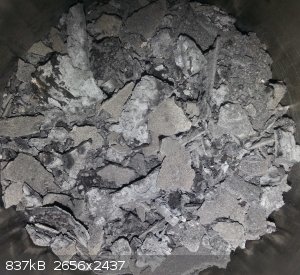
CaCO3 = 100g/mole
Acetone = 58g/mole
Calcium acetate = 158g/mole
So if I had 25g of CaCO3 then that is 1/4 mole or about 40g of Calcium acetate before it decomposed. My previous yield of anhydrous cal acetate is
470g so I would have had a total of 510g had this dried properly. The theoretical 100% yield is 520g, so I am very happy with this process as I know
I spilled some and lost some each time I filtered and washed containers. So the final yield, counting what decomposed, is 98.1%!!
So, I'm really happy with this process and think I could do it in one step in about an hour of actual work time to make up to maybe 5kg of the
product. The price breakdown is pretty good to especially when compared to the pricing on ebay and other sources, which are ridiculously expensive.
I'm going to try making this with some more concentrated acetic acid and see if the black stuff in the decomposition is no longer there.
|
|
|
CharlieA
National Hazard
   
Posts: 645
Registered: 11-8-2015
Location: Missouri, USA
Member Is Offline
Mood: No Mood
|
|
Just out of curiosity, did you do anything to characterize your product, qualitatively and/or quantitatively?
|
|
|
JJay
International Hazard
    
Posts: 3440
Registered: 15-10-2015
Member Is Offline
|
|
Oh, one thing that I might mention - if you're trying to produce methyl ketones by dry distilling calcium salts of carboxylic acids with calcium
acetate, temperature control seems to be important. The first time I tried it, I simply blasted a mixture of calcium benzoate and calcium acetate in a
steel can with a propane burner, and the product that condensed seemed to be mainly benzene. I tried again recently using a temperature-controlled
heating mantle that I slowly raised to a temperature of 444 C over about an hour and a half and held there for about two hours under strong water
aspirator vacuum until no more product distilled. I obtained a light brown, flowery-smelling distillate, probably acetophenone, but the product was
impure and the yield was only about 30% based on calcium benzoate despite a large excess of calcium acetate.
|
|
|
RogueRose
International Hazard
    
Posts: 1585
Registered: 16-6-2014
Member Is Offline
|
|
Quote: Originally posted by CharlieA  | | Just out of curiosity, did you do anything to characterize your product, qualitatively and/or quantitatively? |
no I didn't do anything besides weigh it and then also dissolve some in water. I was very happy when dissolving as it came out crystal clear at
saturation point (20 deg F) and one thing I have found is that sometimes compounds can be clear when evaporating them but upon rehydration they take
on a color, IDK where that comes from but I found it especially noticeable in sodium acetate even though I filtered it extremely well with activated
carbon.
|
|
|
JJay
International Hazard
    
Posts: 3440
Registered: 15-10-2015
Member Is Offline
|
|
I think blowing your breath through a solution of your product will make it turn persistently cloudy if calcium hydroxide is present.
|
|
|